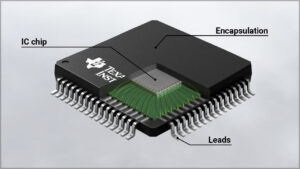Introduction
In the realm of technological progress, AI stands as both a beacon of innovation and a harbinger of ethical dilemmas. One such domain where the ethical implications of AI are increasingly coming to light is in chip design.
The fusion of artificial intelligence with chip design has propelled advancements at an unprecedented pace, but beneath this veneer of progress lie layers of ethical concerns that demand our attention and introspection.
Follow us on Linkedin for everything around Semiconductors & AI
1. Bias in AI Algorithms:
At the heart of AI-powered chip design lies the reliance on vast datasets from past designs. However, these datasets often mirror the biases entrenched in our societal structures.
Consider a scenario where an AI, trained on facial recognition systems biased against certain ethnicities, inadvertently perpetuates these biases in the chips it designs.
The consequences could range from discriminatory outcomes in automated systems to exacerbating existing societal inequities.
Read More: 7 Startup Ideas in Semiconductor Industry – techovedas
2. Lack of Human Oversight:
As AI algorithms delve deeper into the intricacies of chip design, the resulting creations can become labyrinthine in their complexity.
This complexity poses a twofold ethical challenge. Firstly, it obscures the rationale behind the AI’s design choices, impeding human comprehension and oversight.
Secondly, it blurs the lines of accountability in the event of malfunctions or ethical breaches. Who bears responsibility when an AI-designed chip fails?
Is it the human designers who developed the AI or the AI itself? Without clear delineation of accountability, rectifying errors and preventing recurrence becomes a daunting task.
Read More: 7 Indian Companies Powering Tesla’s Auto Revolution – techovedas
3. Responsible Development:
The pursuit of technological advancement must be tempered by considerations of security, sustainability, and ethical integrity.
AI-designed chips, if not meticulously crafted, can introduce novel security vulnerabilities, potentially compromising the integrity of systems they power.
Furthermore, the environmental impact of chip manufacturing cannot be overlooked.
An unchecked pursuit of performance optimization by AI may lead to designs that sacrifice environmental sustainability at the altar of efficiency.
Read More: 10 Tech Jobs Poised to Be in High Demand Over the Next 10 Years – techovedas
Examples:
Bias in Facial Recognition: Imagine an AI-designed chip used in facial recognition software for security purposes. If the training data for the chip’s AI primarily consisted of faces from a specific ethnicity, it might struggle to accurately recognize faces of other ethnicities. This could lead to false positives or negatives, potentially impacting security measures or even causing discrimination.
Vulnerability in Self-Driving Cars: AI could be used to design chips for autonomous vehicles. However, if the AI design process introduced unforeseen vulnerabilities, these chips could be susceptible to hacking. A malicious actor could potentially take control of a self-driving car, causing accidents or privacy breaches.
Job Losses in Chip Design: As AI automates tasks in VLSI design, repetitive or well-defined design stages might be handled entirely by AI. This could lead to job losses for engineers who specialize in those areas. While new opportunities might arise in working with or managing AI design tools, there’s a social responsibility to ensure a smooth transition for displaced workers.
Read More: AI 10X Boost: US Deploys First Large-Scale System in Venado Supercomputer with Nvidia – techovedas
Addressing these Concerns:
The path towards ethical AI-powered chip design demands a multifaceted approach grounded in transparency, accountability, and conscientiousness.
Diversifying and scrutinizing training datasets to mitigate biases, maintaining human oversight throughout the design process to ensure transparency and accountability, implementing rigorous security testing and ethical considerations during AI development, and prioritizing environmental sustainability in chip design are pivotal steps towards fostering a responsible technological landscape.
Read More: 4 Reasons Why Blackhole by Tenstorrent is a RISC-V Marvel for AI Applications – techovedas
Conclusion:
As we stand at the precipice of a new era defined by AI-powered chip design, we must navigate the ethical labyrinth that accompanies technological progress with vigilance and ethical discernment.
By confronting biases, fostering transparency, and prioritizing ethical considerations, we can steer the trajectory of AI-powered chip design towards a future where innovation coexists harmoniously with integrity and responsibility.
In doing so, we can harness the transformative potential of AI to catalyze positive change while safeguarding against the pitfalls of ethical oversight.




